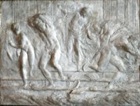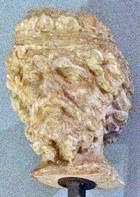

Vincenzo Danti was born in Perugia, the son of the architect and goldsmith Giulio Danti. (1500-75). He had two distinguished brothers:
-
✴Ignazio Danti (1536-86), who became a Dominican monk and a famous mathematician; and
-
✴Girolamo Danti (1547-80), who was an artist.
Vincenzo Danti studied sculpture in Rome in ca. 1545. While still a young man, he secured the prestigious commission for the statue (1555) of Pope Julius III (see below) in his native Perugia. He left Perugia for Florence in 1557 and enjoyed a successful career there.
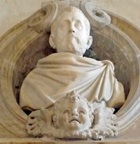
Perugia
Statue of Pope Julius III (1555)
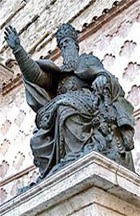
The statue was originally installed close to its current location, but it was moved to safety (according to tradition, to the cellar of a tavern) in 1798 as the occupying papal forces withdrew from Perugia ahead of the advance of the French. It was subsequently erected in Piazza Danti (see Walk I), and was returned to its current location in 1899. (The piazza was named for Vincenzo Danti and his fa,ily at that point.)
Statues (1555)
Cardinal Ascanio della Corgna commissioned two statues, one of which portrayed St Andrew, from Vincenzo Danti for his family chapel, the Cappella di Sant’ Andrea, in San Francesco al Prato. They were destroyed in 1737.
Altare della Pentecoste (1554-5)
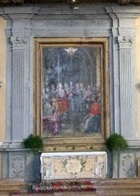
Monument to Gugliemo Pontano (ca. 1555)
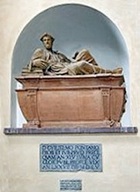
The fine terracotta reclining figure of the deceased on the sarcophagus is extraordinarily animated. It was probably originally covered in white stucco so that it seemed to be made of marble.
Altare di San Bernardino (1559-67)
In 1559, the Collegio della Mercanzio commissioned Ludovico Scalza and “Giovanni di Domenico Fiorentino” (who has been identified as Giovanni di Domenico Caffarelli da Settignano) to build a new altar in the Cappella di San Bernardino of the Duomo. It contained a number of works of sculpture that were attributed to Vincenzo Danti. Ottavio Lancellotti recorded in his “Scorta Sagra” (17th century) that this altar was finished in 1567. The altar was destroyed in 1797, and is now known only from a drawing (1793) that still belongs to the Collegio della Mercanzia.
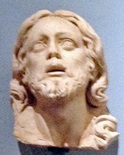
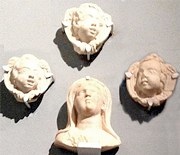
Fragments in the Museo Capitolare that are attributed to Vincenzo Danti might have come from the decoration of this altar:
-
✴a mutilated head of the Risen Christ; and
-
✴a small head of the Virgin and three cherubs.
Work on the Aqueduct (ca. 1560)
According to Giorgio Vasari (in his account of the work of Giovanni Pisano), “About the year 1560, the arches and the conduits of this fountain (which cost 160,000 ducats of gold) having become in great part spoilt and ruined, Vincenzo Danti, a sculptor of Perugia, without rebuilding the arches, which would have been a thing of the greatest cost, very ingeniously re-conducted the water to the fountain in the way it was before, with no small credit to himself”.
Copies of Works by Michelangelo (ca. 1570)
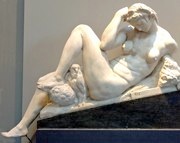
Vincenzo Danti donated these copies of four works by Michelangelo to the the Accademia del Disegno in 1573. The originals (ca. 1530) came from two Medici tombs in San Lorenzo, Florence:
-
✴the original allegories of Dawn and Dusk are on the tomb of Lorenzo de’ Medici; and
-
✴those of Night (illustrated above) and Day are on the tomb of Giuliano de’ Medici.
As noted above, these works formed the nucleus of the collection of plaster casts that is now in the Museo dell’ Accademia di Belle Arti.
Allegorical female figure (ca. 1573)
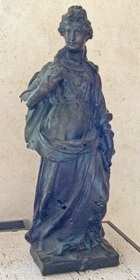
Design of Chiesa dell Compagnia della Morte (1575)
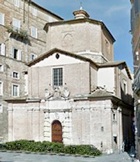
[Could this design in the Cooper-Hewitt National Design Museum of the Smithsonian Institute, Washington, which is signed “Bino Sotij nel primo offitio 1573” and relates to the addition of chapels to an octagonal church, relate to the Chiesa della Morte ??]
Head of a Man (16th century)
Christ Drives the Merchants from the Temple (16th century)
